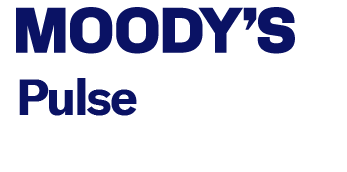10 Accounts Receivable Process Improvement Ideas
As a business grows, the accounts receivable process can become more complex and may require adjustments to keep up with the increased volume. By regularly searching for new accounts receivable process improvement ideas, credit management professionals can stay up-to-date on the latest best practices and technologies.
Whether you’re looking to optimize an existing system or learning how to improve accounts receivable management for the first time, you’ve come to the right place. In this blog post, we will be providing a comprehensive overview of 10 key ideas aimed at streamlining operations, increasing efficiency, and ultimately enhancing the effectiveness of the accounts receivable process.
Goals for Accounts Receivable
Accounts receivable (AR) includes all the funds customers owe you for your products or services, and is captured on your balance sheet under your current assets.
Any improvements you make to your AR processes should address one of four specific goals:
- Send Invoices Promptly
- Get Paid Faster
- Improve Processing Efficiency
- Minimize Bad Debt
10 Tips on How to Improve Accounts Receivable
Optimizing your accounts receivable process will improve your workflow as well as your cash flow. With the right systems in place, your business can be healthier and more profitable than ever. We’ve compiled a list of 10 essential accounts receivable process improvement ideas to help you get started.
1. Maintain an Accurate Customer Database
Every invoice must contain accurate information about your customer. Maintaining an up-to-date customer database ensures that you have the right contact information and that your invoices go to the right place.
Keeping customer records up to date is often a manual process that can be extremely time consuming. Many companies are taking a data driven and efficient approach of leveraging 3rd party data feeds to enrich their customer records with the latest information. Moody’s Analytics offers robust firmographic data feeds so businesses can refresh their databases frequently and efficiently.
2. Enable Electronic Payments
These days, no one has time to wait for a check in the mail. By enabling your customers to pay you electronically, you can receive payment as soon as they receive your invoice.
When you send invoices electronically, you can potentially send an invoice and receive a payment within the same day, giving you nearly-instant access to working cash flow.
3. Establish Payment Terms
Establishing clear payment terms for your business is crucial and can be a challenge for credit managers. More specifically, you want to create a solid deadline for payment and lay out penalties for late payment.
A common deadline is “net 30,” which means payment is due within 30 days of receiving the invoice. You can charge late fees of 10–15% for payments received after this deadline.
Just make sure you communicate these payment terms with your customers before conducting business. Otherwise, your payment terms may come as an unwelcome surprise, which can damage your future working relationship.
4. Let Customers Know You Report to Credit Bureaus
Customer’s that know the speed of their payments will be reported to a credit bureau tend to pay faster. Businesses don’t want credit bureaus showing slow or late payments on their credit report because it can affect future lines of credit.
An efficient way to let customers know you report to a credit bureau is by including the information on your invoice. Moody’s Analytics Pulse gives all AR contributors a stamp for their invoices, so users can let their customer’s know their AR is being reported, encouraging faster payments.
5. Offer Incentives for Early Payments
Assessing fines for late payments can prevent clients from neglecting their invoices. However, if you want to get paid even faster, offer incentives to your clients for paying early.
For example, you might offer a 10% discount if your client pays their invoice within a week of receiving it. You’ll receive less money overall, but you’ll have the cash on hand immediately, which can often be even more valuable in business.
6. Automate Your Payment Reminders
It’s not at all uncommon for customers to deliberately neglect your invoices, at least the first time you send them. Even larger companies may strategically delay payment in order to focus on paying other, more pressing bills.
The right AR solution can send automated payment reminders to your clients, including reminder emails and text messages. These gentle reminders can nudge your customers to pay their invoices immediately, resulting in fewer bills being lost in the shuffle.
7. Create a Payment Plan
Depending on the nature of your business, you may be invoicing for large shipments or billing for long-term projects. For example, if you’re a B2B supplier, your clients may struggle to pay for a new inventory shipment all at once. Creating a payment plan will prevent delays in your payments and set you up to receive a steady inflow of cash.
Service-based businesses can create a variation of this by invoicing as each stage of a project is completed. If you’re a web development agency, you could bill a client as each portion of their website is up and running. This strategy also minimizes the risk of completing the work and discovering that the client can’t pay you.
8. Set Early Deadlines
While your payment terms are largely up to you, most businesses will discover that earlier deadlines can encourage faster payments.
If you’re a major distributor, a net 30 or net 60 invoices can give your client time to review their order and submit a lump-sum payment. But for smaller orders, a net 15 or net 10 deadlines can create a greater sense of urgency and push your clients to pay you upon receipt.
9. Perform Regular Risk Assessments
Performing risk assessments on who you do business with is important because it identifies potential threats or vulnerabilities to your accounts receivable. However, performing risk assessments can be reactive and time consuming.
To assess risk efficiently, many credit departments leverage credit monitoring services to monitor the financial health of their customers. Moody’s Analytics Pulse will monitor your receivables across thousands of risk factors for free, and alert you on any change in your customer’s financial health in time to act.
10. Automate Your AR Processes
The more administrative processes you automate, the better off you’ll be. In addition to creating invoicing templates, some of the best software solutions can even pull data from the purchase order to populate the invoice before sending it to the client.
Not only will automation result in less paperwork and faster payments, but it can also reduce errors that can slow your business to a crawl and take hours to track down manually.
Mitigate AR Risk With Real-Time Customer Data
Moody’s Analytics Pulse can help you protect your AR portfolio by monitoring the credit risk of your customers and sending you updates in real time.
For more insight into how to improve accounts receivable, check out our credit resource hub. To learn more about what Moody’s Pulse can do for your business, contact us or schedule a demo today!




